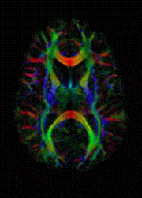
Photo from wikipedia
Purpose To evaluate the effect of using intraoperative fluoroscopy on femoral and tibial tunnel positioning variability in single-bundle anterior cruciate ligament (ACL) reconstruction. Methods A total of 80 consecutive patients… Click to show full abstract
Purpose To evaluate the effect of using intraoperative fluoroscopy on femoral and tibial tunnel positioning variability in single-bundle anterior cruciate ligament (ACL) reconstruction. Methods A total of 80 consecutive patients with single-bundle ACL reconstruction between 2014 and 2016 were retrospectively reviewed. Among them, 40 underwent ACL reconstruction without fluoroscopy (non-fluoroscopy group) and 40 underwent fluoroscopy-assisted ACL reconstruction (fluoroscopy group). Femoral and tibial tunnel locations were evaluated using a standardized grid system with three-dimensional computed tomography images. Femoral and tibial tunnel location variability was compared between the groups. Results The operation time was longer in the fluoroscopy group than in the non-fluoroscopy group (61.3 ± 5.2 min vs. 55.5 ± 4.5 min, p < 0.001). In the fluoroscopy group, a guide pin was repositioned in 16 (40%) cases on the femoral side and 2 (5%) cases on the tibial side. No significant difference in the femoral tunnel location was observed between the fluoroscopy and non-fluoroscopy groups (anterior–posterior plane, 29.0% ± 3.2% vs. 30.0% ± 6.1%; proximal–distal plane, 30.8% ± 4.8% vs. 29.4% ± 8.3%; all parameters, n.s.); variability was significantly lower in the fluoroscopy group ( p < 0.001 for both anterior–posterior and proximal–distal planes). No significant difference in the tibial tunnel location and variability was observed between the fluoroscopy and non-fluoroscopy groups (medial–lateral plane, 45.8% ± 2.0% vs. 46.6% ± 2.4%; anterior–posterior plane, 31.2% ± 4.0% vs. 31.0% ± 5.4%) (all parameters, n.s.). Conclusions Tunnel positioning with fluoroscopic assistance is feasible and effective in achieving consistency in femoral tunnel placement despite a slightly longer operation time. Intraoperative fluoroscopy can be helpful in cases wherein identifying anatomical landmarks on arthroscopy was difficult or for surgeons with less experience who performed ACL reconstruction. Level of evidence IV.
Journal Title: Knee Surgery, Sports Traumatology, Arthroscopy
Year Published: 2019
Link to full text (if available)
Share on Social Media: Sign Up to like & get
recommendations!